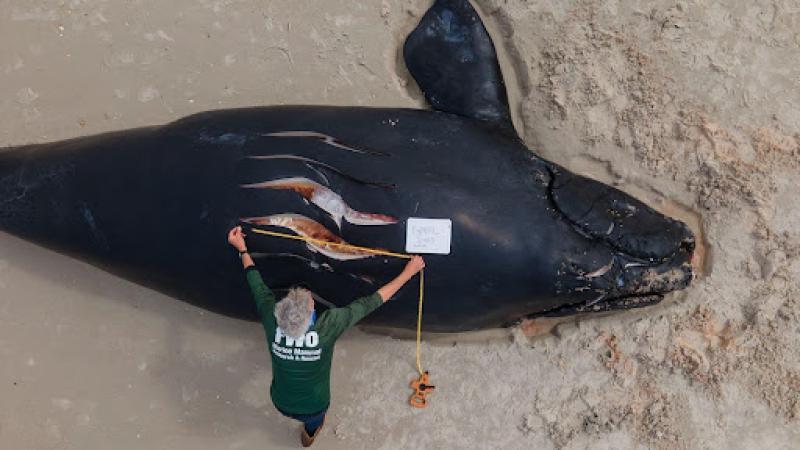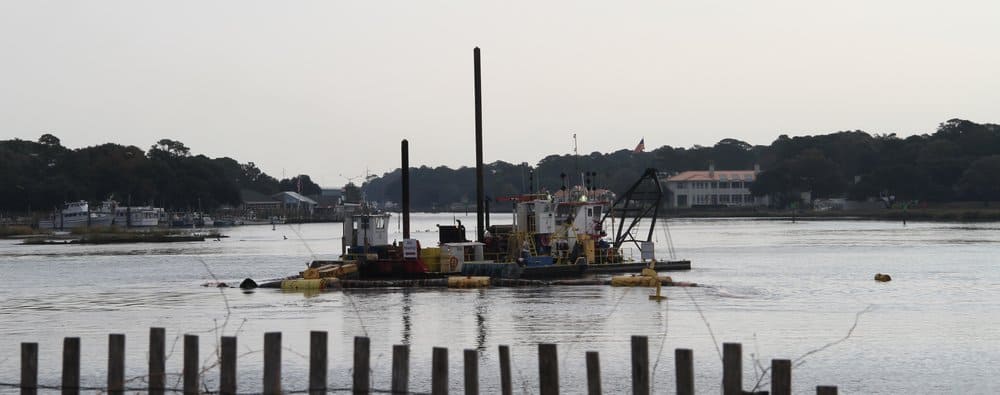NOAA Fisheries has announced a new interactive dashboard that reports which kinds of vessels are following offshore speed limits meant to protect North Atlantic Right Whales—and which vessel types are not complying.
NOAA uses Automatic Identification Systems (AIS) data to track speed limit compliance for most vessels 65 feet and longer, which are required to travel at 10 knots or less in certain areas offshore of the East Coast to reduce collisions with endangered right whales.
NOAA’s new online dashboard shows data represented by green (compliance with the 10-kt. speed limit) and yellow, orange or red (vessels traveling from 10-15+ knots in a right whale speed limit zone). The numbers are broken down into speed, season, month, speed zone and vessel type.
Overall, the dashboard shows high levels of compliance by most vessels during the 2022-2023 seasonal speed zones. NOAA Fisheries touts “strong compliance across sectors,” noting that vessel compliance has greatly improved since regulations were first implemented in 2008. Overall, 77 percent of vessel trips followed the speed limit, while 22.5 percent did not.
A colorful graphic representation shows speed limit compliance versus breaking the limit by different vessel types (container ships, commercial fishing vessels, offshore work vessels, sailboats, research vessels, etc.).
Recreational boat traffic of boats 65 feet or longer had noticeably fewer boats following the speed limit. Nearly 100,000 trips had AIS-recorded speeds over 15 knots, with even more clocked between 10-15 knots. Only about 73,400 were at or under the legal limit of 10 knots.
A new study by ocean advocacy group Oceana paints a more dire picture. They report that the majority of vessels are not following mandatory or voluntary speed limits. Oceana’s report, released the same week as NOAA’s dashboard, analyzes NOAA data on boat speeds from 2020-2022. The group finds that “84% of boats sped through mandatory slow zones, and 82% of boats sped through voluntary slow zones.”
“Boats are speeding, and whales are dying—it’s just that simple,” says Oceana Campaign Director Gib Brogan. “It’s clear that boats are still not abiding by the speed limits and are continuing to make the ocean a dangerous place for North Atlantic right whales…Even one human-caused death is too many for this population to sustain. If NOAA wants to save this species from extinction, ships must slow down when these whales are present, and speeding boats must be held accountable.”
NOAA Fisheries also says these speed restrictions are important to protect right whales as the species approaches extinction, with vessel strikes as one of the leading causes of mortality and serious injury. The North Atlantic Right Whale is experiencing an Unusual Mortality Event along the Atlantic coast.
“One of our objectives in our North Atlantic right whale Road to Recovery is to monitor the effectiveness of conservation efforts, and this dashboard helps us do just that,” said Janet Coit, assistant administrator for NOAA Fisheries. “This dashboard allows NOAA Fisheries to closely monitor and share how effective speed regulations are at slowing down vessel traffic to reduce the threat of vessel collisions to right whales.”
NOAA’s Office of Law Enforcement and the Coast Guard enforce North Atlantic right whale speed regulations. In the 2022-2023 season, 56 vessel speeding cases resulted in $950,306 in civil penalties.
In addition to AIS data, law enforcement uses portable radar units to detect speeding in vessels not carrying AIS and actively patrol Seasonal Management Areas while speed limits are in effect.
Going forward, the government agency wants to tighten restrictions even further to include vessels as small as 35 feet, a proposal that has been met with protest from recreational boaters.
As Bay Bulletin reported, NOAA Fisheries recently received $82 million in funding for right whale monitoring technology. The agency also hints at “several announcements” it plans to make in October related to North Atlantic right whales.
-Meg Walburn Viviano



